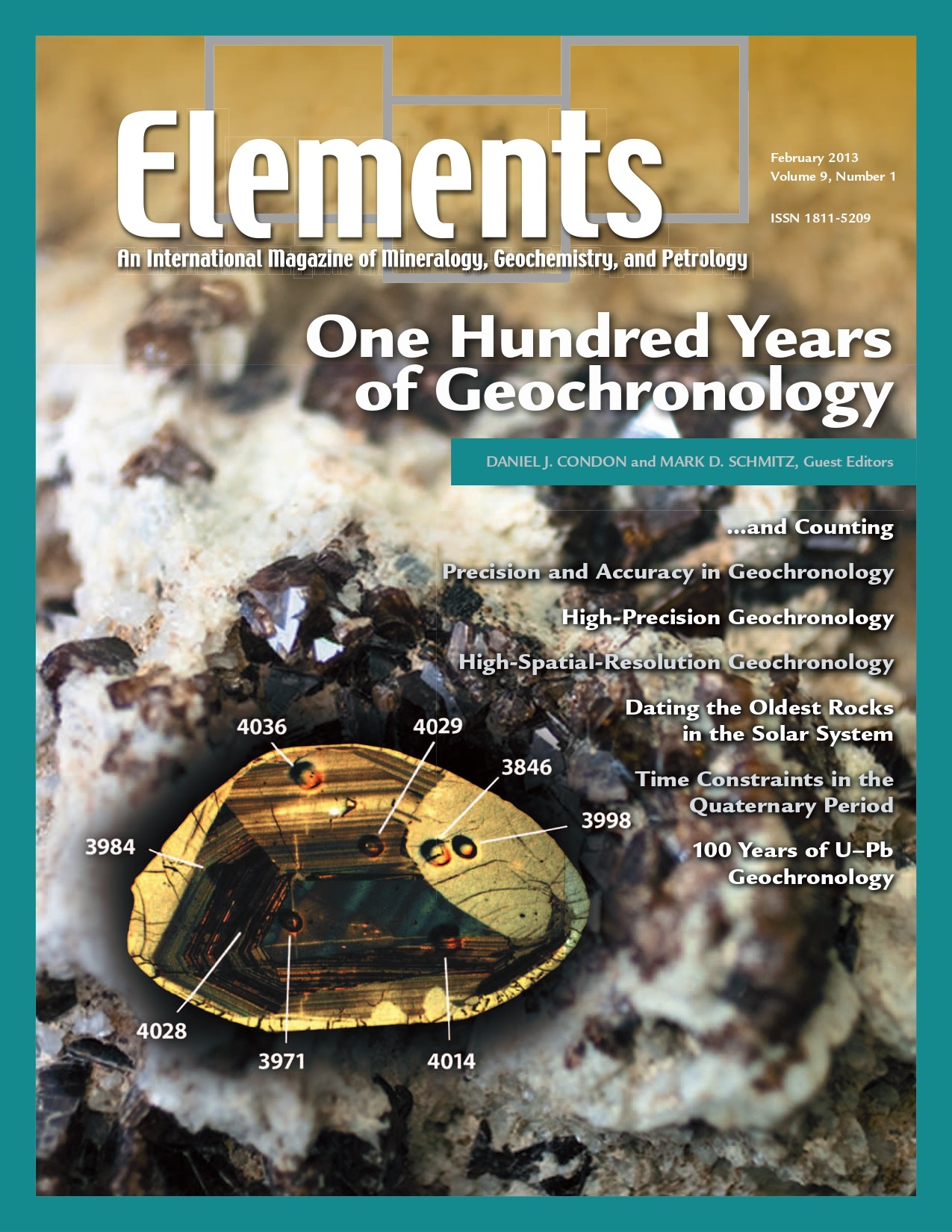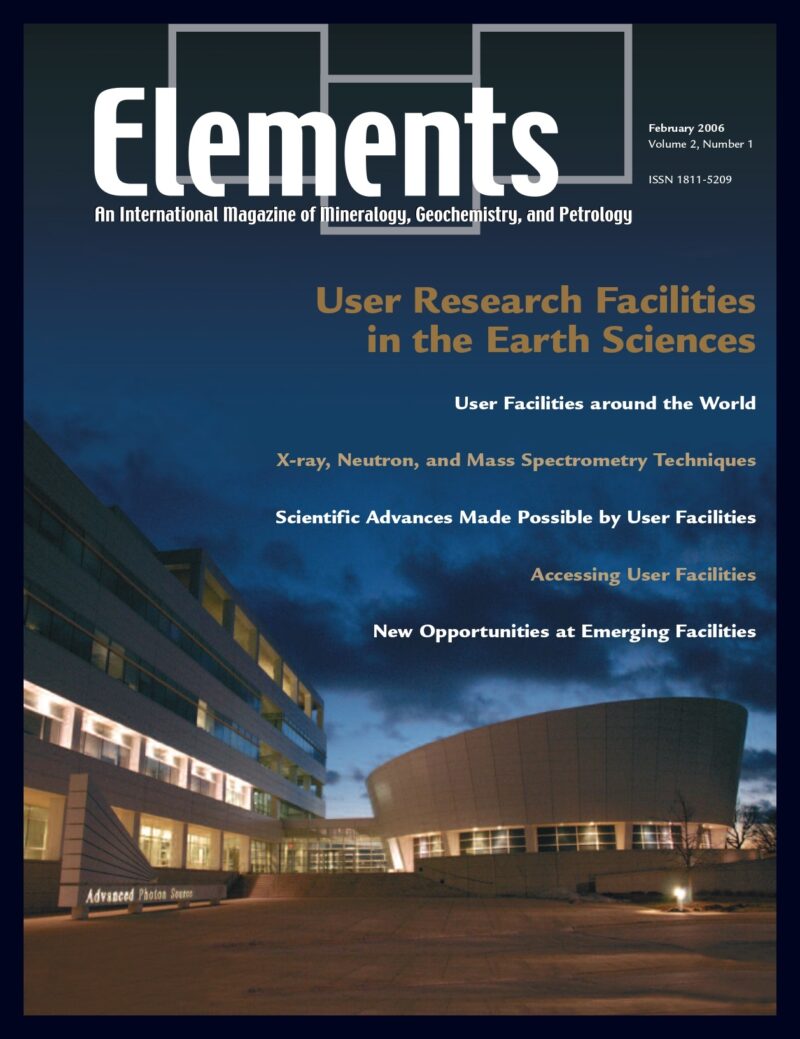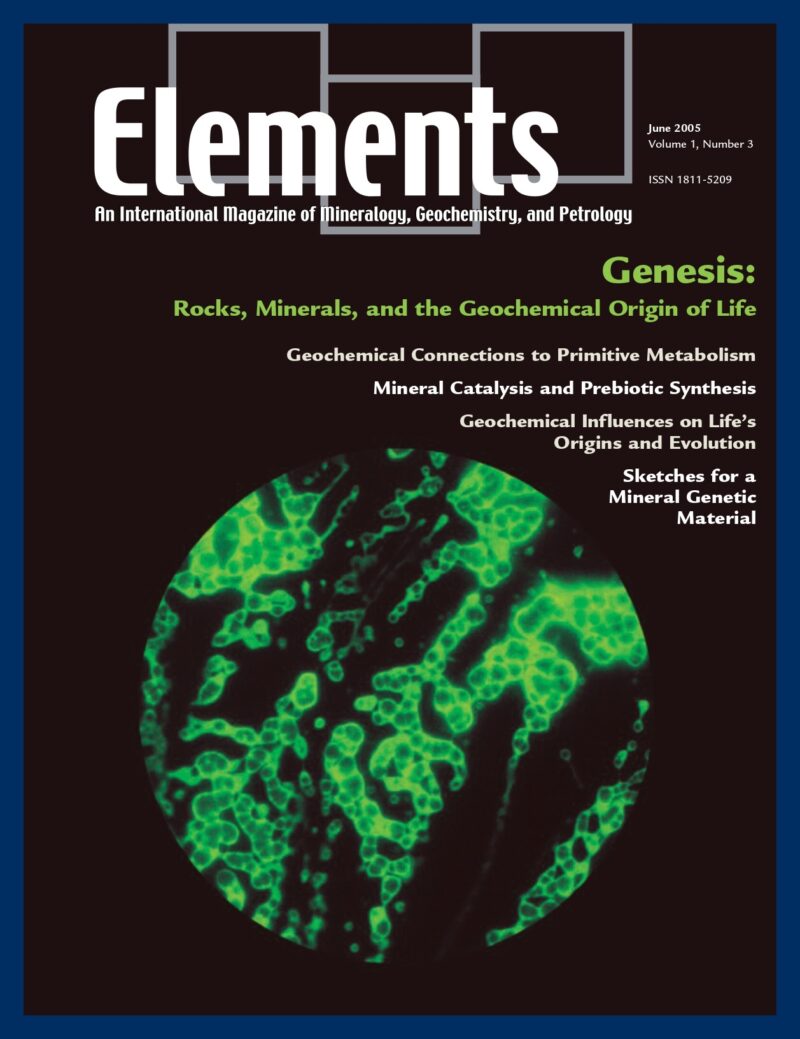
Granitic Pegmatites, August 2012, Vol. 8, No. 4
June 28, 2024
Kaolin, June 2014, Vol. 10, No. 3
June 28, 2024One Hundred Years Of Isotope Geochronology, February 2013, Vol. 9, No. 1
$20.00
In 1913, Frederick Soddy’s research on the fundamentals of radioactivity led to the discovery of “isotopes.” That same year, Arthur Holmes published his now famous booklet The Age of the Earth.
One Hundred Years Of Isotope Geochronology
February 2013, Vol. 9, No. 1
In 1913, Frederick Soddy’s research on the fundamentals of radioactivity led to the discovery of “isotopes.” That same year, Arthur Holmes published his now famous booklet The Age of the Earth. Combined, these two landmark events established the field of science we know as “isotope geochronology.” Today, isotope geochronology underpins much of our knowledge of the absolute age of minerals and rocks, and the records they contain. This field is constantly evolving, reflecting and responding to scientific drivers that require more highly resolved timescales, the microscopic analysis of smaller zoned minerals, or the generation of robust data sets in novel materials. This series of articles provides perspectives on the state of the art in the field of radioisotope dating—from the challenges of dating the Solar System’s oldest materials to resolving the record of Quaternary climate change, and the four and a half billion years in between.
Why You’ll Love Elements Magazine:
- Expert Contributors: Articles written by renowned researchers in the field of geoscience.
- Engaging Content: Join a community of readers who are passionate about Elements.
- Exceptional Quality: Each issue is printed on high-quality paper with stunning visuals and detailed illustrations that bring complex scientific concepts to life.
Order your copy of the February 2013 issue of Elements magazine today and learn about one hundred years of isotope geochronology.
Related products
-
User Research Facilities In The Earth Sciences, February 2006, Vol. 2, No. 1
$20.00Earth scientists rely on effective access to user research facilities that provide state-of-the-art analytical instrumentation. This thematic issue focuses on some of these facilities and how to use them.
-
Carbon Dioxide Sequestration, October 2008, Vol. 4, No. 5
$20.00Storage of carbon in the subsurface involves introduction of supercritical CO2 into rock formations beneath the surface of the Earth, typically at depths of 1000 to 4000 meters. Although CO2 is a relatively benign substance, the volume being considered is large.
-
Genesis: Rocks, Minerals, And The Geochemical Origin Of Life, June 2005, Vol. 1, No. 3
$20.00Few scientific questions so capture the public imagination, or provoke such lively debate, as how life on Earth emerged. In this issue of Elements, four of the most creative minds in origins research present their original insights on the geochemical origins of life.




